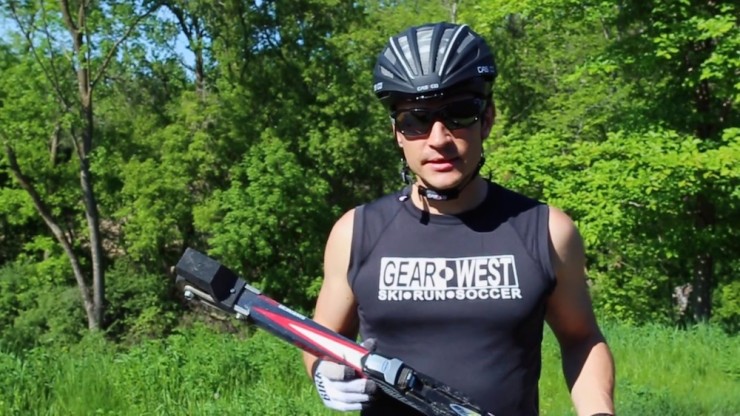Note: Written by Matt Liebsch, director of race services at Gear West Ski and Run, this is the second installment of how-to series about taking care of your summer skis — that is, your rollerskis.
Now that summer is finally here, skiers are starting to lay the foundation for a successful winter race season by putting in volume and specific training. This most likely includes a fair amount of rollerskiing. For many skiers this time spent on rollerskis actually amounts to time on-snow. So as skiers, we should be mindful of the performance and safety of our rollerski equipment. Rollerski maintenance is generally considered an afterthought for many, but just a few minutes of effort can greatly enhance the performance and safety of your equipment.

Tip #1: My #1 rule, wear a helmet!
Tip #2: Inspect bindings
- I use NNN R3 bindings mounted on a composite rollerski. This spring I noticed the bindings seemed a bit loose. I added a bit of wood glue and retightened all the screws and all better. For loose bindings on metal rollerskis try retightening the screws. If that does not work, remount the binding as the mounting hole is too big/over stretched for the screw. Move the binding forward or back at least 1cm to avoid punching 2 holes too close together.
Tip #3: Inspect wheels
- Deep cracks or tearing can indicate it’s time to replace the wheels.
- Fix tracking: The number-one complaint I get about rollerskis is tracking. The issue usually comes down to uneven wheel wear or the wheel not in alignment. The fix for uneven wheel wear is a continued effort to swap left and right rollerskis every workout. For a misaligned wheel, try unloosening the axel bolt and retightening it. Also, a gentle tap of the wheel against the ground to correct the wheel alignment can fix the problem quickly. Make sure to look at both front and rear wheels as the rear wheel is almost more important to tracking as most of the skiers weight is on the back wheel… kind of like the rudder of a boat.
Tip #4: Check bearings
- If they do not spin smoothly replace them or take apart the wheel/bearings and clean everything. A grinding spin can indicate the bearing has been compromised and you never want a bearing to overheat and lockup when using the rollerski. It is possible to remove a bearing cover and add additional bearing grease. I recommend having a qualified shop do this or just replace the bearings which are not that costly.
Tip #5: Fix tracking via wheel-axle nuts
- Check that these are tight and if they are showing wear from grinding, replace them.
Tip #6: Keep your skis clean
- Towel off your rollerskis every time you use them in wet conditions — the road spray and wetness is not great for your equipment. A quick dry off goes a long ways to prolonging the life of the rollerskis.
Tip #7: Always sharpen your rollerski tips/ferrules before training sessions. Dull tips can lead to slipped pole plants. An inopportune missed pole plant can certainly lead to a crash.
Tip #8: DON’T!
- Please do not loosen the rollerski axel nut in an attempt to increase speed.
- Also, please to not use a solvent based oil (WD-40) to lubricate bearings.



